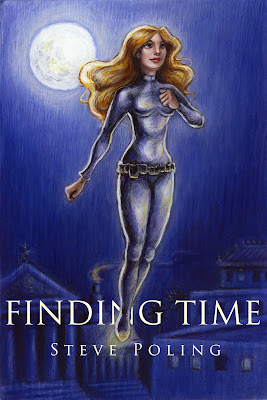"Better" thus becomes "better at what?"
Jim Lileks is the best writer I know in that last dimension. If you have an extra few minutes check out one of his wordier bleats. Nobody catches the essential character of the onset of autumn as well as Lileks.
The novel Graveyard Special is a comedy murder mystery of sorts. It is no "puzzle story" such as you'd get from Agatha Christie or Dorothy Sayers. Nor is it a "hard boiled" tale of a detective solving a crime with two hard fists and a hot gat. The murders are sort of incidental to the atmospherics.
 The Protagonist is a pot-smoking art student who seems to have paid too much attention to the reports of the swells in New York being all ironic and such. Thus he becomes a lad from the provinces thrust into the swirling intrigues of a university in the provinces. This story is quite American provincial.
The Protagonist is a pot-smoking art student who seems to have paid too much attention to the reports of the swells in New York being all ironic and such. Thus he becomes a lad from the provinces thrust into the swirling intrigues of a university in the provinces. This story is quite American provincial.It takes place in the second half of 1980. The Cold War and threat of nuclear Armageddon haunts the protagonist's thoughts of the larger world. Though Lileks leans to the right, he catches the weltschmerz of a college punk liberal. Surely, the commies can be reasoned with and no doubt that dangerous cowboy Reagan will start a nuclear war.
 This college punk kid is in the process of finding himself and you might call this novel a coming of age story. The protagonist is working the overnight shift at a Diner. The cook has a nightly habit of huffing Reddi-Whip at 3:00 AM. This makes him dizzy and he lies down to savor his cheap high. One night the cook never gets up, because he's been murdered.
This college punk kid is in the process of finding himself and you might call this novel a coming of age story. The protagonist is working the overnight shift at a Diner. The cook has a nightly habit of huffing Reddi-Whip at 3:00 AM. This makes him dizzy and he lies down to savor his cheap high. One night the cook never gets up, because he's been murdered.This begins the mystery of whodunnit. We discover his brother is campus radical with connections to bomb makers and ROTC bombers. (The sort of people who went on run the Obama wing of the Democrat party.) This has the cops interested.
The second body dies when someone gets the bomb-making wrong. Intrigue and conspiracy ensue while the protagonist tries to get the girl he loves from her boyfriend. Oh, and there's a sexy Russian Teaching Assistant to make things complicated for the protagonist and to provide the obligatory T&A pun.
The story is strong on atmospherics and character. This story transported me back to my own grad school experience and it reminded me of when I was a callow youth.
The story builds to a satisfying climax with the protagonist saving the day. But the denouement is afflicted with an Irving the explainer and an unsatisfactory solution to the remaining plot threads.
Despite the weak finish, I give Graveyard Special 5 of 5 stars.















































